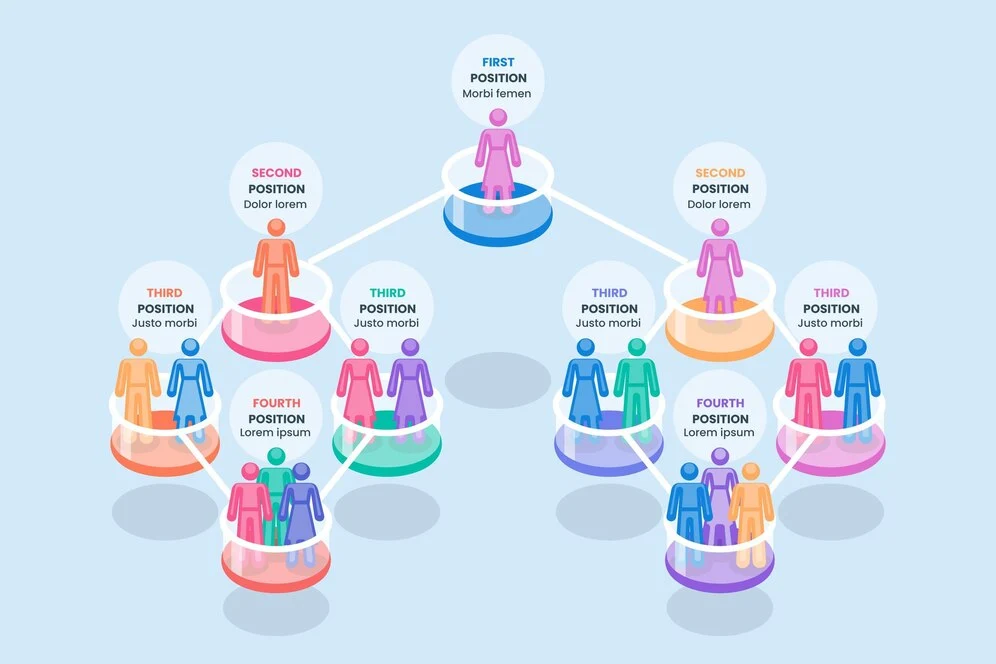In the realm of data analysis, “hierarchical clustering” emerges as a pivotal technique that plays a crucial role in understanding complex datasets. Read Importance of clustering, unraveling its potential and applications. Our aim is not just to provide information but to offer a comprehensive guide that surpasses existing content on Google.
Hierarchical Clustering
Definition
“Hierarchical clustering” is a sophisticated data analysis method that classifies similar data points into groups or clusters. Unlike other clustering techniques, this approach creates a hierarchy of clusters, showcasing relationships and structures within the data.
Types of Hierarchical Clustering
- Agglomerative: This method starts with individual data points and progressively merges them into larger clusters.
- Divisive: In contrast, divisive hierarchical clustering begins with a single cluster encompassing all data points, which is then divided into smaller clusters.
Applications Across Industries
1. Biomedical Research
It finds extensive use in biomedical research for categorizing genetic data. By identifying patterns in genetic information, researchers gain insights into disease classifications and potential treatment strategies.
2. Marketing and Customer Segmentation
In the business arena, companies leverage hierarchical cluster for customer segmentation. This aids in targeted marketing strategies, ensuring personalized communication that resonates with specific consumer groups.
3. Image and Signal Processing
The application of hierarchical clustering extends to image and signal processing. It facilitates the organization of large datasets, enabling quicker retrieval and analysis of relevant information.
Advantages of Hierarchical Clustering
1. Interpretability
One of the standout advantages of hierarchical clustering is its interpretability. The hierarchical structure visually represents relationships, allowing analysts to discern patterns effortlessly.
2. Flexibility in Analysis
Hierarchical clustering adapts well to various data types and shapes, making it a versatile tool for data scientists. Its flexibility ensures applicability across diverse domains.
Overcoming Challenges in Hierarchical Clustering
While hierarchical cluster offers a robust framework for data analysis, it is not without challenges. Addressing these hurdles is crucial to maximizing the effectiveness of this technique.
1. Scalability
Large datasets may pose scalability issues in hierarchical clustering. Employing optimization techniques and parallel processing can alleviate this challenge.
2. Sensitivity to Noise
Hierarchical clustering can be sensitive to noise in the data. Implementing preprocessing steps, such as outlier removal, enhances the accuracy of results.
Innovations and Trends
As technology evolves, so does the landscape of data analysis. Hierarchical clustering is no exception. Keeping abreast of the latest innovations and trends ensures its continued relevance in the dynamic field of data science.
1. Integration with Artificial Intelligence
Integration with artificial intelligence enhances predictive modeling and pattern recognition. This synergy paves the way for more accurate and efficient data analysis.
2. Real-time Clustering
As businesses demand real-time insights, the future of clustering involves advancements that enable quick and dynamic clustering of data, ensuring timely decision-making.
Conclusion
Hierarchical cluster stands as a stalwart in the arsenal of data scientists, offering a nuanced approach to understanding complex datasets. We have delved into its intricacies, applications, advantages, and future trends, providing a holistic perspective on this powerful data analysis technique.


